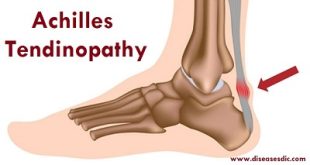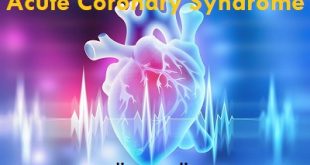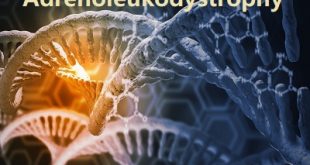Definition
Adenomyosis is the condition in which the cells that form lining on the inside of the uterus and also grows in the muscle wall of the uterus. This results in the enlarged uterus and heavy or longer bleeding as well as pain during intercourse or menstrual cycle. This condition is similar to endometriosis, in which tissue grows outside of the uterus. So it is referred as sister disease of endometriosis. The exact cause of this disease is unknown. But however, it is associated with the high level of estrogen. The symptoms are pain and heavy bleeding.


History
- 1893–1896- Thomas Stephen Cullen, an American gynecologist who made his first observations in adenomyosis
- 1898- Iwanoff illustrated was first described the adenomyoma
- The first systematic description of what is today known as adenomyosis was the work of Thomas Stephen Cullen who, at the turn of the 19th century, fully researched the ‘mucosal invasion’ already observed by a number of investigators in several parts of the lower abdominal cavity.
- In 1925, 2 years before Sampson created the term ‘endometriosis’, Frankl created a name for the mucosal invasion of the myometrium and clearly described its anatomical picture; he called it ‘adenomyosis uteri’ and explained that ‘I have chosen the name of adenomyosis,
- The current definition of adenomyosis was finally provided in 1972 by Bird who stated: ‘May be defined as the benign invasion of endometrium into the myometrium, producing a diffusely enlarged uterus
Epidemiology
Adenomyosis typically affects women of reproductive age. In general, affected women are multiparous, and the condition is seen with higher frequency in a woman with a history of uterine surgical procedures (e.g. Caesarian section, dilatation, and curettage). It has a reported incidence that ranges widely from 5 to 70%, depending on the histological definition or the imaging modality used.
Types
There are three types of adenomyosis based on the location of the disease in the uterus include:
Diffuse adenomyosis: This type of adenomyosis occurs throughout the uterus wall. That is deep into the uterus muscle walls and thus it causes severe pain and bleeding during menstrual cycle.
Adenomyoma: It is similar to focal adenomyosis, but it is more extensive and thus it may result in uterine fibroma, uterine mass, and tumor.
Focal adenomyosis: Focal adenomyosis is located in particular site of the uterus which causes mild pain and symptoms.

Risk factors
Some of the risk factors are as follows:
Age: Beginning of the age 40 or 50, that is before menopause
Having child: Pregnancy may also facilitate the development of adenomyosis due to the high ratio of estrogen receptors in the uterus muscles.
Prior uterine surgery: It was most often diagnosed only when a woman had a hysterectomy.
Depression and antidepressant use: Increased risk of depression and higher antidepressant use also cause adenomyosis.
Tamoxifen treatment: It is relatively rare in postmenopausal women but a higher incidence of adenomyosis has been reported in women treated with tamoxifen for breast cancer.
Causes
The main causes of the adenomyosis were unknown. But there is a number of theories about the causes of adenomyosis include:
- The invasive growth of abnormal tissues towards into the muscle layer that forms the uterine walls
- Inflammation of the uterine muscle lining after the childbirth that causes cells to grow into the weakened muscle layer
- Before birth, the tissue lining was deposited into the uterine muscle during early days of fetal life
After menopause, it disappears due to the lack of estrogen. Only during the reproductive stage of women may face adenomyosis due to the high-level production of estrogen.
Symptoms
- Painful menstruation that may involve new cramps (dysmenorrhea).
- Heavy or prolonged menstrual bleeding.
- A uterus that is 2-3 times its normal size.
- Pain during intercourse.
- Clogged blood passed during menses.
- The uterus may get enlarged.
Complications
- Heavy bleeding during mensuration.
- Chronic anemia.
- Anemia cause fatigue and severe health problems
- It disrupts the lifestyle of a patient.
- A painful period can cause strain in the relationship and allow for loss in daily work.
Diagnosis and Testing
Pelvic exam
A physician will check for the pelvic size and examine the vulva, uterus, and cervix for the enlargement of the uterus.

Imaging
Ultrasonography: In ultrasonography, adenomyosis in the endometrium can be identified. Adenomyosis is the area of decreased heterogeneity of the endometrium.

MRI: Variations in the thickness of the inner myometrium or junctional zone can be measured by MRI imaging.
Endometrial biopsy
A small tissue sample from the uterine is taken for the histologic evaluation, which helps to identify the proper results.

Treatment and medications
Hysterectomy: If a woman is beyond the menopausal stage and suffering from severe menstrual pain, a doctor will advise doing the hysterectomy. Removing the ovaries does not control adenomyosis but the removal of the entire uterus helps to cease the problems associated with adenomyosis. It is the most effective treatment.
Hormone medications: Combination of progesterone-estrogen birth control pills and patches or vaginal rings containing these hormones can be used to reduce the heavy bleeding and pain occurs during periods.
Anti-inflammatory drugs: Anti-inflammatory medications, such as ibuprofen (Advil, Motrin IB, others) can be used to ease the pain during severe menstrual bleeding.
Prevention of adenomyosis
- Perform physical exercise regularly.
- Quit smoking
- Restrict caffeine intake to two cups per day.
- Take calcium carbonate supplements of 1000 mg per day.
- Consume vitamin B6 supplements of around 50-150 mg per day. It can help to control estrogens by removing them from your liver. This reduces pain.
- Take flax seeds, flax oil, and olive oil frequently in your diet, as they are rich in omega 3 fatty acids. They have high anti-inflammatory properties. They can reduce the menstrual pain and muscle contractions.
- Avoid fatty foods like potato chips, French fries, doughnut, and peanut butter.
- Try to reduce meat products, eggs from your diet day by day.
- Use the minimal amount of sugar and salt.
 Diseases Treatments Dictionary This is complete solution to read all diseases treatments Which covers Prevention, Causes, Symptoms, Medical Terms, Drugs, Prescription, Natural Remedies with cures and Treatments. Most of the common diseases were listed in names, split with categories.
Diseases Treatments Dictionary This is complete solution to read all diseases treatments Which covers Prevention, Causes, Symptoms, Medical Terms, Drugs, Prescription, Natural Remedies with cures and Treatments. Most of the common diseases were listed in names, split with categories.








Nothing in literature that says omega 3 fatty acids do anything. Vitamins only help if your levels are decreased. Less than.0003% of people have decreased levels. Most of them are in starving countries. I enjoy this app.
I had a problem for diabites,hepasion.cysty on ovary i need help
Please consult a doctor.
how can we cure adenomyosis that has caused infertility in woman?. thanks
Please consult a gynecologist.
This educatinal tips are woow. Thank you and God bless you to so that you will grant with his wisdom to teach us more about this.Because girls or women of this days are suffering with this deases
please I just want to know whether this sickness have a cure
The only adenomyosis treatment that can cure it is a hysterectomy.
I want to know the different Adenomysis and fibroid
Adenomyosis occurs when endometrial cells exist and grow into the walls of the uterus.
Endometriosis occurs when cells from the uterine lining plants in areas outside of the uterus.
I have been suffering from this problem for years now, having period is so painful and heavy even having intercourse so painful please help me doctor
please contact a gynecologist
please help me, when I’m having period it’s pains a lot and having sex too. even my stomach it’s pains to badly, I been in different hospitals but all they can say is nothing is wrong with u. I have been scanned but nothing. do u think it would be adenmycosis
please consult an experienced gynecologist.
is it possible for one with this problem to conceive?
It is not possible unless it is treated.
can endometriosis and Adenomyosis be treated without removing the womb?
Removing your womb isn’t necessary to treat adenomyosis.
I really need some drugs that can help me with this diagnosis
To diagnose your problem you should consult a doctor before taking drugs for the treatment.
Why are some people having
heavy flow?
Women who do experience abnormally heavy menstrual bleeding may have a condition called menorrhagia. This condition causes flows so heavy and needs to change the tampon or pad every hour. They may also use more than six or seven tampons a day.
i am suffering from utrain fibroids and i am un married plz suggest me how can remove it with surgery
Consult a gynecologist for better prescription of treatment.